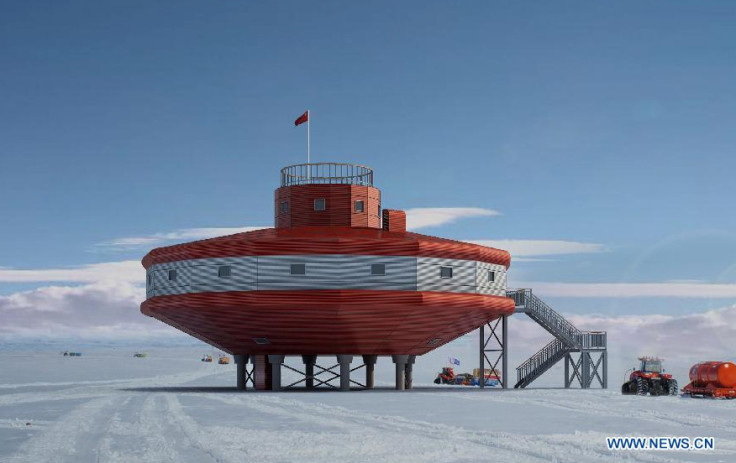China Opens UFO-Shaped 'Taishan' Space Research Station in Antarctica

China has officially opened its fourth research station in Antarctica for investigations into "geology, glaciers, geomagnetism and atmospheric science".
Shaped like a flying saucer and named after one of China's five sacred mountains, Taishan has been built between Chinese research stations Zhongshan and Kunlun, at an altitude of 2,600 metres (8,500ft).
It took 45 days to build with construction crews facing temperatures of -40C and high-altitude conditions. The station will be used during the Antarctic summer (December to March) for research. It can accommodate up to 20 people at a time.
The Taishan station can be used for scientific observation, power generation, as well as offering facilities for accommodation, storage, machinery maintenance, communication and emergency shelter.
The station comes with oil storage installations and is equipped to support a 400-tonne inland transportation vehicle fleet.
China launched its first Antarctic expedition in 1984. Over the past three decades, rival countries have ramped up competition for territory in the resource-rich Antarctic.
The Antarctic Treaty has been in place since 1961 to preserve the area as a place for free scientific investigation, and forbids any country from pursuing military activity in the area.
Xinhua said that China's explorations "have always been peacefully intended" and that the country was keen to cooperate with other nations, particularly at its Kunlun station.
"Peaceful use of Antarctica in the future will be a blessing for all humankind," State Oceanic Administration deputy director Chen Lianzeng said.
In early January, the Chinese ice-breaker MV Xue Kong (which means "snow dragon") helped rescue the research vessel Akademik Shokalskiy, which had been trapped by thick ice 1,500 nautical miles south of Hobart, Tasmania for weeks.
© Copyright IBTimes 2025. All rights reserved.






















